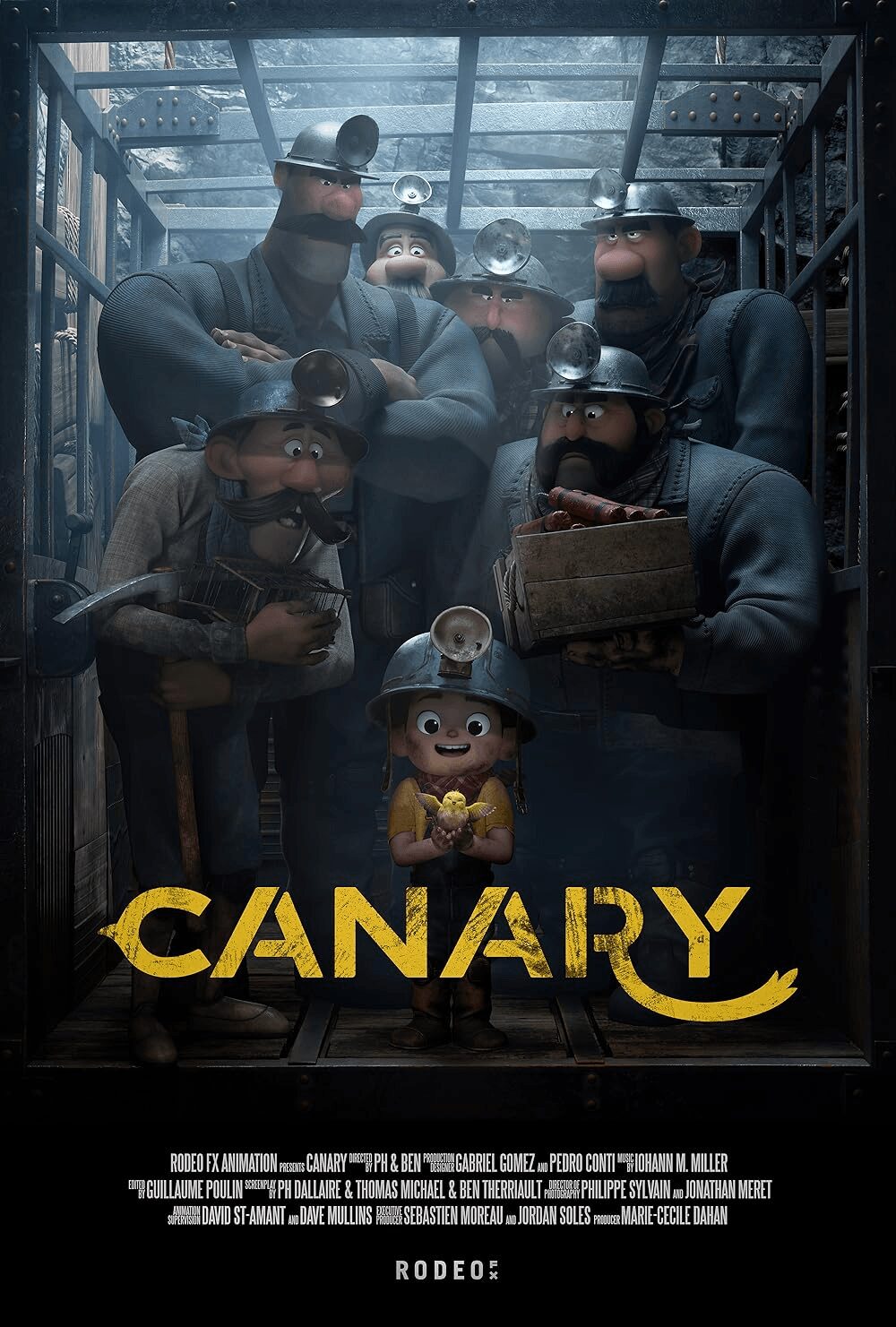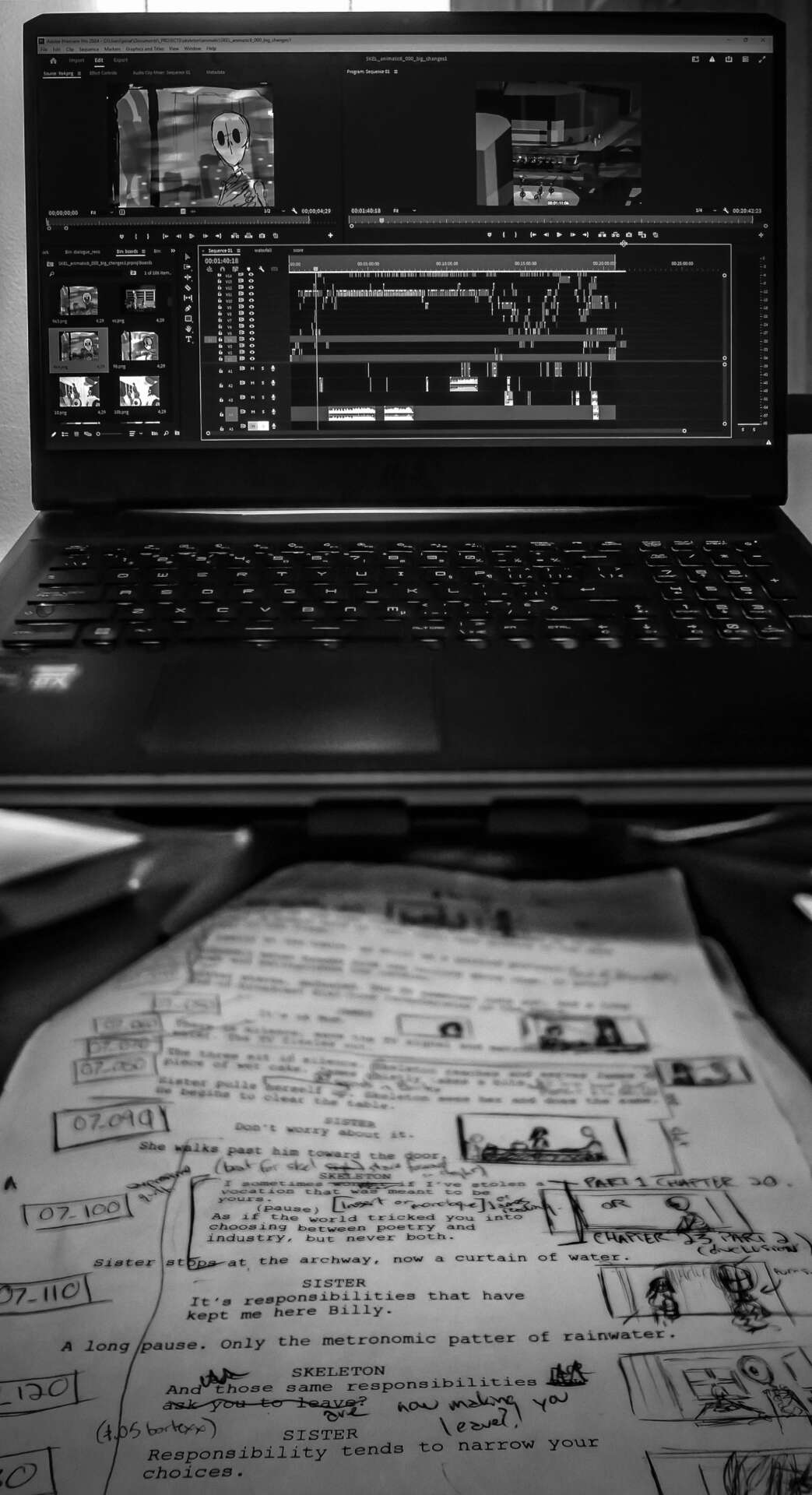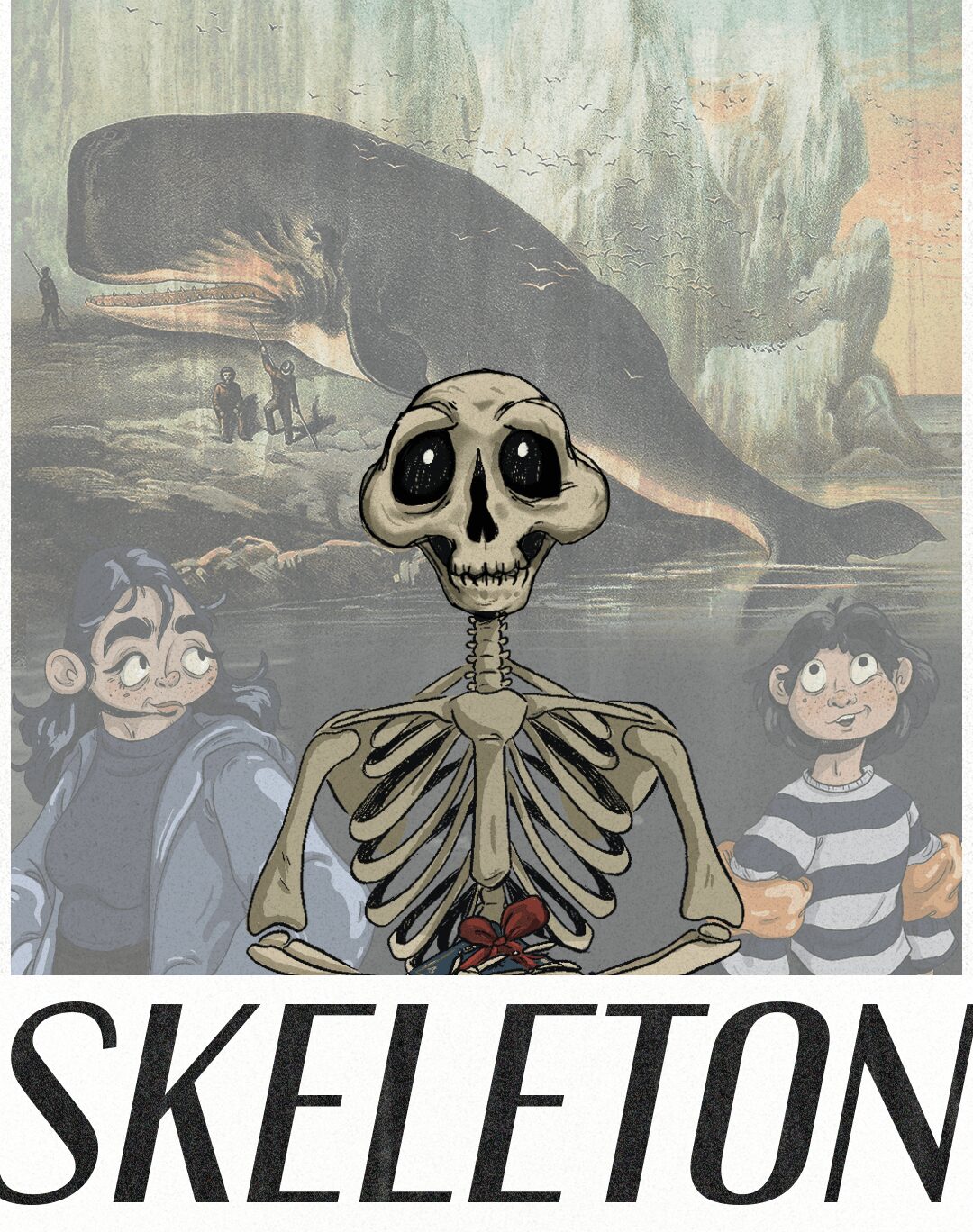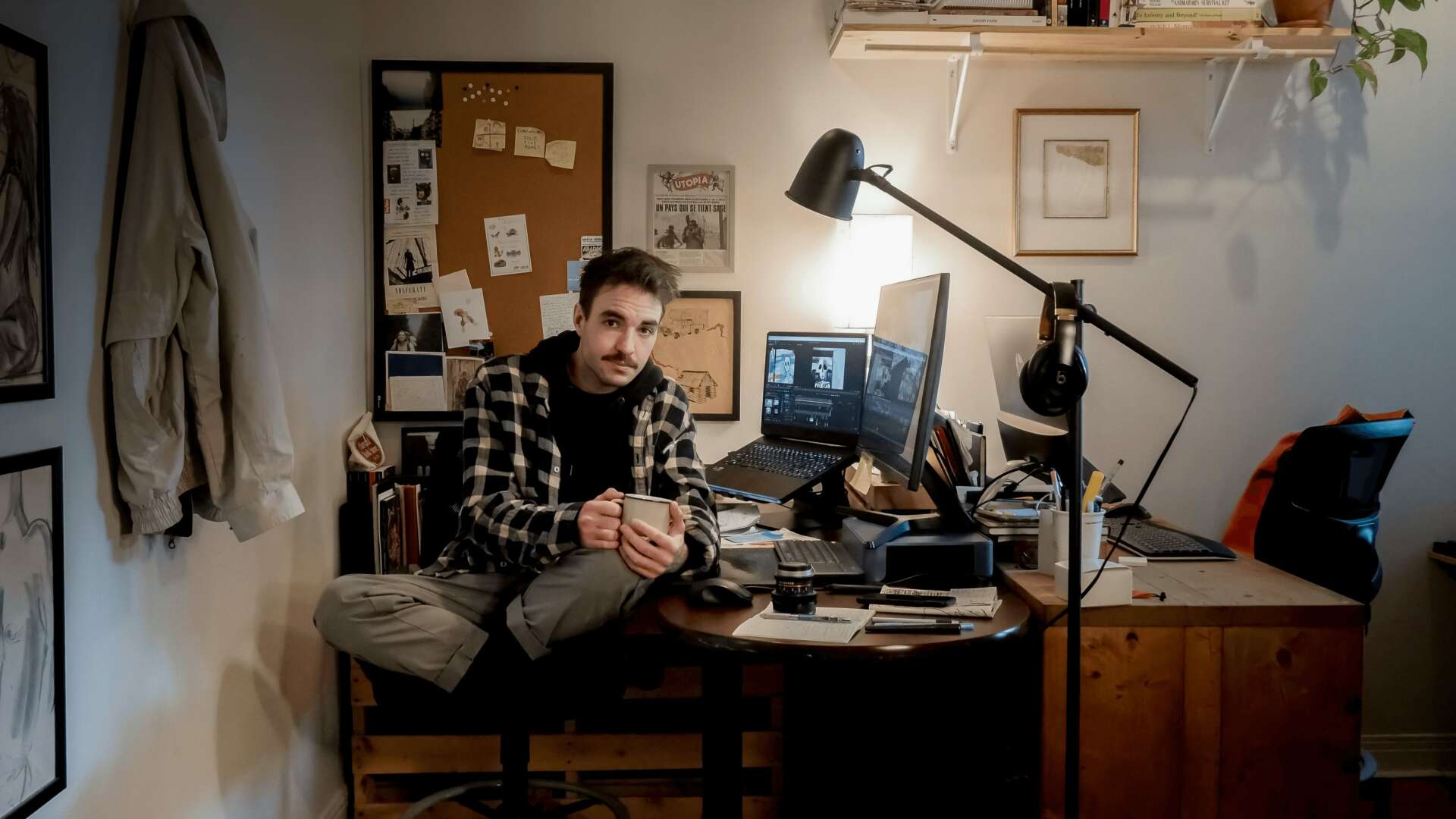We’re excited to introduce you to the always interesting and insightful Jonathan Meret. We hope you’ll enjoy our conversation with Jonathan below.
Jonathan, looking forward to hearing all of your stories today. Can you talk to us about a project that’s meant a lot to you?
The most meaningful project I’ve worked on to date is ‘Canary’ by PH Dallaire & Ben Therriault. It’s a 12 minute short film that the two directors had been shopping around for a while before landing at RodeoFX, who would finance and produce the film. RodeoFX is a huge company who mainly creates visual effects for Hollywood clients. And up until that time I had made a career nearly spanning a decade as a camera & layout artist. I had always worked for big animation houses, on big budget projects such as Storks, Over the Moon, and Arcane. And when called to join Rodeo on Canary, I was initially expecting much of the same. There is a certain way of doing things in animation; a specific pipeline that all big projects adhere to. And of course, with my career being solely immersed in that, I became accustomed to the traditional computer feature animation way of doing things: I would be part of a team of camera artists, pre-visualizing sequences based off storyboards and revising them up until it matched the vision of the supervisor, then director of photography, then director, and sometimes then producer and client. But those expectations left really quick when I would become the only camera artist on ‘Canary’ and that in fact, there would only be one lighting artist, a handful of animators, and even the composer was brought on at the recommendation of our editor, who was a close friend and bandmate of his. We were a tiny crew, and with that came an immense creative liberty, where each of us, in our role, were given complete confidence in our taste, our instincts, and what we felt would make this short the greatest version of itself. That was deeply meaningful; having a group of artists who each felt that the film was theirs, and would put in all of their energy to make it beautiful. I am very grateful to those two directors to this day; they gave me my first Director of Photography credit and created the spark for me to pivot into short form content and deeper storytelling through cinematography.

Jonathan, love having you share your insights with us. Before we ask you more questions, maybe you can take a moment to introduce yourself to our readers who might have missed our earlier conversations?
Yeah of course, so my core focus is camera work and cinematography for animation. I’ve played around a bit in live action, making micro films as a hobby, but I’m lucky enough to have made a living in the animation industry. My love for animation started pretty much the same way as a lot of other artists- I saw a Pixar film (Monsters Inc.) in theatres when I was 9, and knew that I wanted to do: that. I didn’t know what ‘that’ specifically was at the time, but it set my target and informed most of the extra curricular decisions I made through school and beyond. I went to post-secondary with the intent of becoming an animator, but I think of two things that really turned my path towards cinematography. The first was living with my best friend who is a complete film buff and introduced me to so many different stories over the years, and then would connect them and share backstory that really opened my eyes to the power of film and all of these cinematic expressions. And the other was a teacher who showed me that a living could be made out of camera work and a wider view of storytelling at large.
I then spent the next ten years working and learning and improving my craft surrounded by other artists. But of course every artist has their own story they want to tell, or be able to work on projects that better convey what it really is that we all love about film: the reflections of ourselves and our dreams and our conflict, etc. Humanity! And, understandably, that need wasn’t being fully met in those larger places. The industry was then hit with mass-layoffs, and I was unemployed for a year. That was a blessing in disguise in the end; I went freelance and worked on a series of small gigs that would allow me the time to begin building what it is I really wanted to do: independent short film making. I widened my craft and dived into writing and editing and that snowballed into the development of my first “real” independent project, a short film called ‘Skeleton’. It’s an ambitious project; filmmaking is not easy. But you network, you collaborate with people that you trust, and as of today we are nearly wrapped on pre-production and looking for financing to get into the full production phase. I don’t know if that answers the question, but I think taking that opportunity during that year is what I am most proud of.
And filmmaking is all about collaboration, so along with Skeleton, I look to team up with other directors who also have stories to tell and need help to bring their vision to life. The creative playground in a director/cinematographer relationship is awesome, and I find the two end up bringing complimentary ideas and skillsets to the table. Which only ever helps a project.

What’s a lesson you had to unlearn and what’s the backstory?
This actually came up in my social feeds today so I am reminded of it and it really applies. It’s a quote by Phil Tippett, who is a legendary stop motion animator and filmmaker, and the quote essentially touches on how nowadays, with so many steps in the animation production hierarchy, the focus during the reviews of creative work boils down to “spotting the mistake”.
And its true that the majority of the time, an artist comes out of a review with a series of notes on what to fix. So Phil goes on and says that if you go through hundreds of revisions of the same shot, always just fixing and never creating, well, eventually you kill the- art. And making something better is different than fixing all the mistakes until it is perfectly smooth.
So I am unlearning that now: this idea that shot reviews are about mistake fixing. I’ve come to really like the “imperfections”, you really see the hands of the artists.

What do you think is the goal or mission that drives your creative journey?
The goal is always, simply, to contribute to a piece of film that an audience member will deeply resonate with, and carry with them. We all have films that we continue to remember and that have, honestly, probably shaped your life in one way or another. So an honest relationship between maker and viewer is what really drives me.
Contact Info:
- Website: https://www.jonathanmeret.com/
- Linkedin: https://www.linkedin.com/in/jonathan-meret-7a653338

Image Credits
Presentation photo by Sommets du cinéma d’animation
Poster character designs by Emily Larrabee


